
As a teacher, you constantly check in on your students to see how they are. You’re always there to support them, and if they’re struggling you help find assistance for them. It’s all part of social-emotional learning (SEL).
But you need SEL, too. New research from the Yale Center for Emotional Intelligence and the Collaborative for Academic, Social and Emotional Learning (CASEL) shows that teachers are more anxious and overwhelmed since the pandemic and in need of SEL more than ever.
For you to best support students, you must feel supported as well. And not just by individuals, but within a structured system that permeates a school’s culture.
We found a few CTA members who have benefited from such a system. These positive school environments that offer SEL for staff might inspire other districts to formalize programs where educators feel valued, cared about and supported.
Stockton: Educators thriving
“We are not here to learn how to teach like a champion, check for understanding, monitor students’ progress or learn new pedagogical skills. We are here for our well-being and to build connections with each other. This is not professional development. It’s personal development,” Tyler Hester tells his class.
Welcome to an introductory session of Educators Thriving (ET), a unique program in Stockton that has become a support network for educators in this Central Valley community.
It started in 2019 when the district brought in Hester, then a Harvard doctoral student, to share his research-based personal development program to support early-career teachers. The Stockton Teachers Association (STA) received a grant from CTA to make the program free and expand it to include veteran teachers.
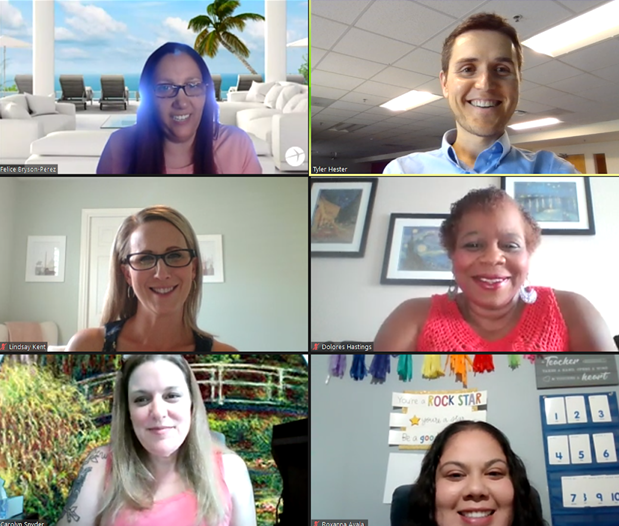
Stockton Teachers Association members clockwise from top left: Felice Bryson-Perez, Tyler Hester, Delores Hastings, Roxanna Ayala, Carolyn Snyder, Lindsay Kent.
Hester had surveyed educators and his program addressed the five “pitfalls” that were leading them to burnout: feeling overwhelmed, personal neglect, unexpected challenges, isolation, and having a fixed mindset.
In 2020, Hester became a creative writing and leadership teacher at Chavez High School and an STA member. Then the coronavirus hit. What started as a teacher support program during nornal times became a lifeline for STA members coping with stress and anxiety in unprecedented times.
“Unlike most programs, it focuses on the educator,” says Delores Hastings, a third grade teacher at Marshall Elementary School. “It helps us with our vision, reminds us of our core values, and helps us prioritize. It helps us be better educators because it helps us as human beings.”
Educators attend online sessions about identifying and using their strengths, crafting goals, reflecting and integrating core values, practicing mindfulness, and prioritizing what is important. They attend asynchronous lessons narrated by Hester but are joined in real time by a small group of colleagues and STA “fellows” who facilitate discussions. Between sessions, they apply strategies to improve well-being and reflect on their actions. They receive continuing education credits, too.
So far, 84 percent of ET participants report the program has made them feel teaching is “more sustainable.” Teacher retention has increased; 97 percent of teachers in the program returned, compared with 90 percent of another group.
“We’ve had amazing feedback from our members,” says Felice Bryson-Perez, president of STA and a teacher at Taft Montessori School.
Roxanna Ayala, a teacher at Taft, embraced mindfulness to help deal with the stress of losing a loved one to COVID-19 and getting a pink slip, which was rescinded. “It’s a very powerful tool and helps me keep my sanity and stay grounded every day.”
ET began as a collaboration between Hester and the Boston Teachers Union, where it is still available. It is also offered to Kern County educators through the county department of education.
His inspiration for the program goes back to his first year as a teacher in another California district in 2008. While having breakfast with his mother at an IHOP, she asked, “How are you?” Hester ended up crying into his pancakes. Moments like that strengthened his conviction to focus on the wellness of educators.
Hester reminds participants that wellness is a journey and not a destination, and that he is continuing to try research-based strategies for his own well-being. The program is not therapy; the goal is helping educators thrive and creating community.
He comments that 20 years ago, very few people were providing SEL supports for students, and today SEL is a critical component of all instruction.
“I’m hoping that 20 years from now, it will be commonplace for educators, too.”
CTA chapters interested in Educators Thriving can contact Tyler Hester at tyler@educatorsthriving.org.
Pacifica: Restorative circles
Educators use restorative circles in their classrooms to develop relationships, build communities, and respond to conflicts and problems — where all students have an equal opportunity to speak and be listened to.
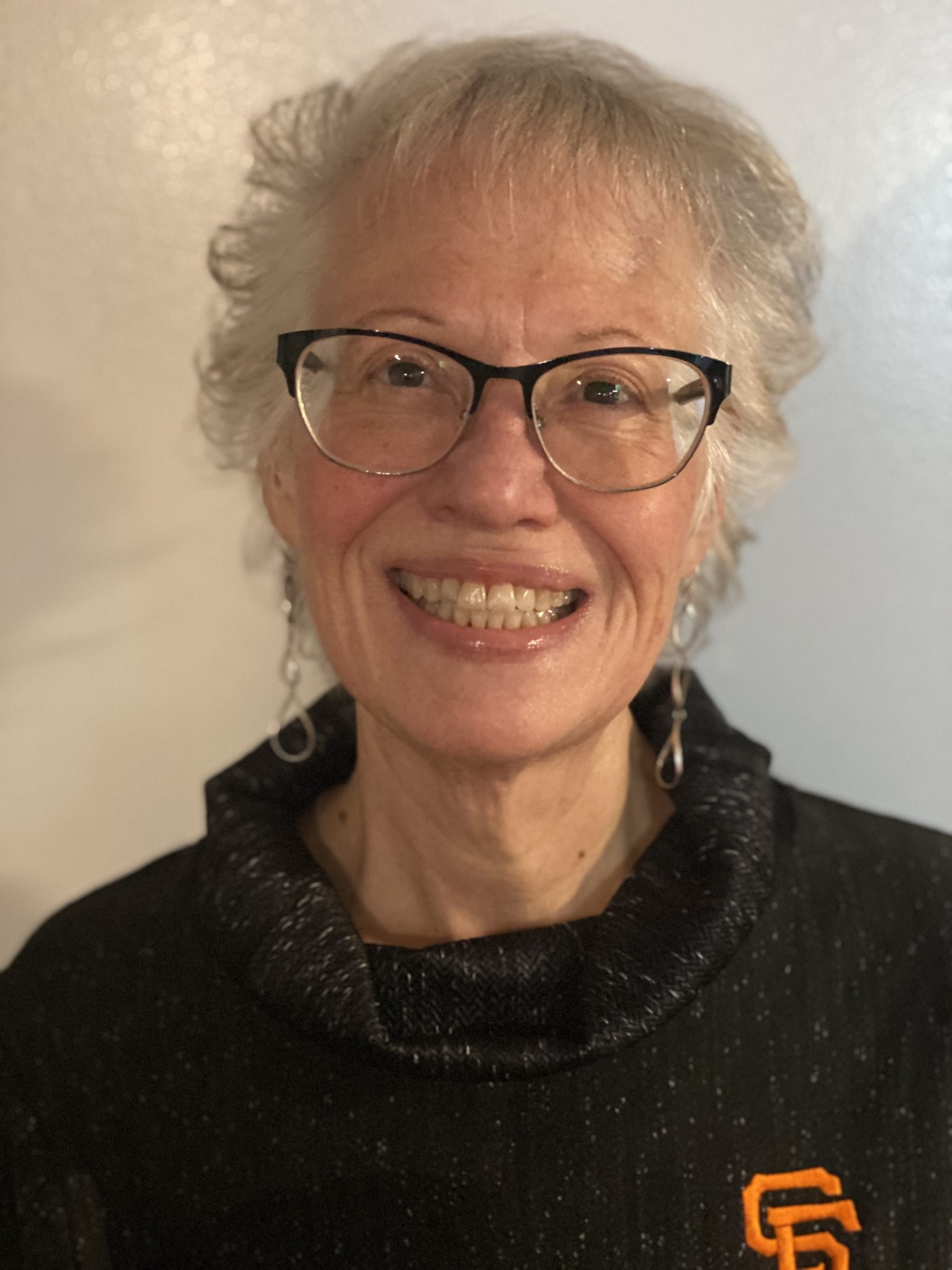
Debby Lyttle
In the Pacifica School District this past year, online, voluntary restorative circles were held every other week to help employees process the many challenges of a difficult time.
“The idea sprang from a return-to-school planning session [in summer 2020] when we discussed how important it was to support our staff as well as students,” says Natalie Abinante, a special education teacher who is vice president of Laguna Salada Education Association (LSEA).
In addition to the circles, all staff have access to SEL-related resources for themselves and for students through Google Classroom. They proved extremely helpful for those grieving the death of a beloved staff member.
“The circles put my mind at ease and put me in a better place,” says LSEA member Debby Lyttle, a fifth grade teacher at Sunset Ridge Elementary School. “We discovered we were experiencing the same things early last year: depression because we weren’t with the kids in person; isolation from being at home; and anxiety because the unknown was scary. I also felt joy seeing my colleagues in a setting that wasn’t a staff meeting.”
The circles include classified employees and administrators such as Julie Carrillo, director of special education and student services for the district.
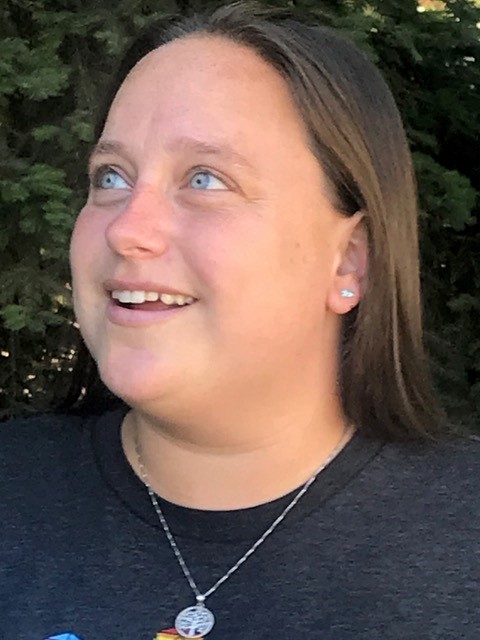
Natalie Abinante
“We decided that we need to focus on the mental health of students — but we needed to put on our own oxygen masks first,” says Carrillo. “The circles provide a safe space for that. It isn’t therapy and it isn’t a dumping ground. It is staff reaching out to other staff to provide camaraderie and support.”
Participants are encouraged to speak from the heart, listen to one voice at a time, be solution-oriented, and not take things personally. They share what makes them stronger or feel better.
“My biggest benefit was fostering connections and knowing I wasn’t in this alone,” says Abinante, who has a master’s in restorative practices and led the circles. “It gave people a chance to process what was happening, and in some instances, it provided us the strength to continue.”
The circles paused for the summer but will resume online this fall.
Riverdale: Shedding weight (and isolation)
This spring, members of the Riverdale Teachers Association sponsored a “Pandemic Pound Loss Challenge.” President Doug Childress observes that colleagues had put on extra pounds from inactivity during the pandemic.
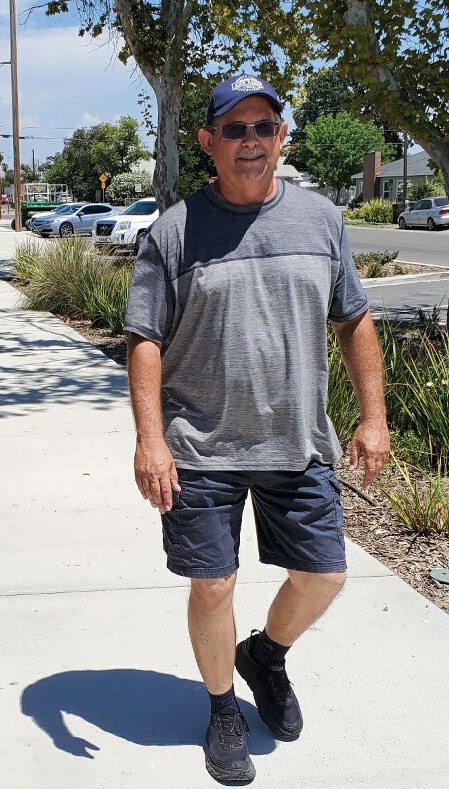
Doug Childress
But it wasn’t just about the weight, says Childress, a fifth grade teacher at Riverdale Elementary School. “The depression that comes with weight gain, as well as feelings of isolation in the new socially distanced workplace, was taking a toll.”
Teachers in the district’s three schools formed teams consisting of teachers, administrators, classified employees and school board members to see which team could lose the most weight, as in the TV show The Biggest Loser, over an eight-week period.
Employees went power-walking together and shared weight loss ideas. They held video chats and created motivational videos. (They occasionally “sabotaged” other teams by supplying them with free doughnuts.) Through such collaboration, healthy habits increased and isolation decreased. Connections between administrators, certificated and classified staff and school board members were strengthened.
You might even say the participants became The Biggest Winners.

Cameron Mendez
“At the end of eight weeks, 76 employees had lost over 550 pounds, and everyone had a great time,” says Childress. He lost 47 pounds and was the winner — but recused himself since he was overseeing the competition and holding confidential weigh-ins. Thanks to his weight loss, he was able to zipline on his summer vacation.
Cameron Mendez, choir teacher at Riverdale elementary and high schools, was the official winner, having lost 26 pounds. “This was exactly what we all needed to get ourselves on track, not only mentally but socially,” he says. “We all needed something to buy into, and this competition boosted spirits with camaraderie and friendly rivalry along the way.”
Winning teams received gift cards, and contestants from all teams were treated to a free lunch from a “healthy options” food truck.
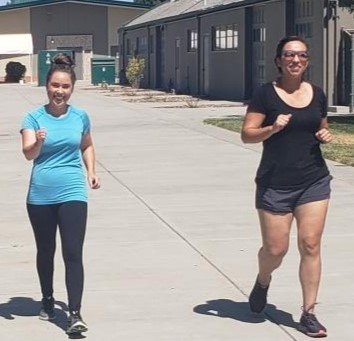
Jacqie Lopez, Jessica Reyes
For some, the changes were life-altering.
“I started taking care of myself,” says Jacqie Lopez, a first grade teacher at Fipps Primary School who lost 24 pounds. “I had put on weight during the pandemic from sitting 55 to 60 hours per week in front of my computer and not eating well. I have started walking with a fellow teacher every day at lunch, and it’s been a great stress reliever.”
Jessica Reyes, a chemistry teacher at Riverdale High, took up running every day and lost 12 pounds. “It became easier to deal with teenagers, Zoom issues I was having, and whatever else went wrong. I felt mentally prepared for anything.”
Childress may repeat the competition once the pandemic is over.
“I don’t want this to be a one-time thing and then forgotten. People made big changes toward a healthier lifestyle, and I’d like that to continue.”
Campbell: Feeling love and community
Jennifer Phillips enjoyed support from her school community at a time when she desperately needed it.

Jennifer Phillips
“Campbell School of Innovation did an amazing job supporting teachers during these very trying times,” says the Campbell Elementary Teachers Association member. “The Parent Teacher Organization is phenomenal. From time to time, encouraging notes were placed in my box with heartfelt words of appreciation that were specific to me, not rubber stamps. Parents sent encouraging words of appreciation and gifts, and took turns providing lunch, Starbucks cards and classroom donations. The district held monthly raffles for wellness baskets, encouraging us to share our own stories of self-care.”
The support made all the difference, says the fifth grade teacher.
“There were many times that prepping for the next day went late into the night, and it was really touching to receive genuine appreciation from parents, colleagues and district personnel, acknowledging how hard we were working. It made me feel that even though times were extremely tough, I could go on.”
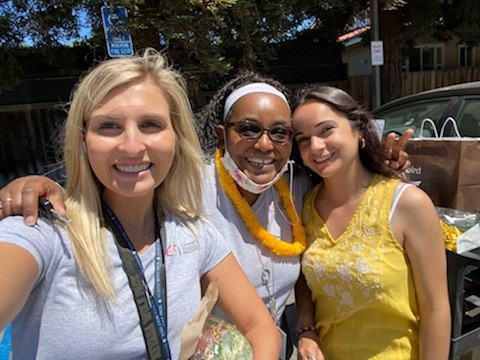
Fifth grade teachers Lauren Ensor and Jennifer Phillips with Phillips’ student teacher Laura Henao. “We were super supportive of each other, and I adore them!” says Phillips.
During online learning, a parent expressed appreciation and asked if there was anything needed to make the job easier. When Phillips mentioned that her chair was uncomfortable, the parent, to her amazement, sent a comfy chair to her house as a gift. She was very touched.
“For me it’s not just about the gifts; it’s about the thoughtfulness and appreciation of the hard work teachers are doing,” says Phillips. “Teacher SEL is just as important as student SEL. You can’t be there for others if no one is there for you.”
Sign Up, Take Part, Learn More
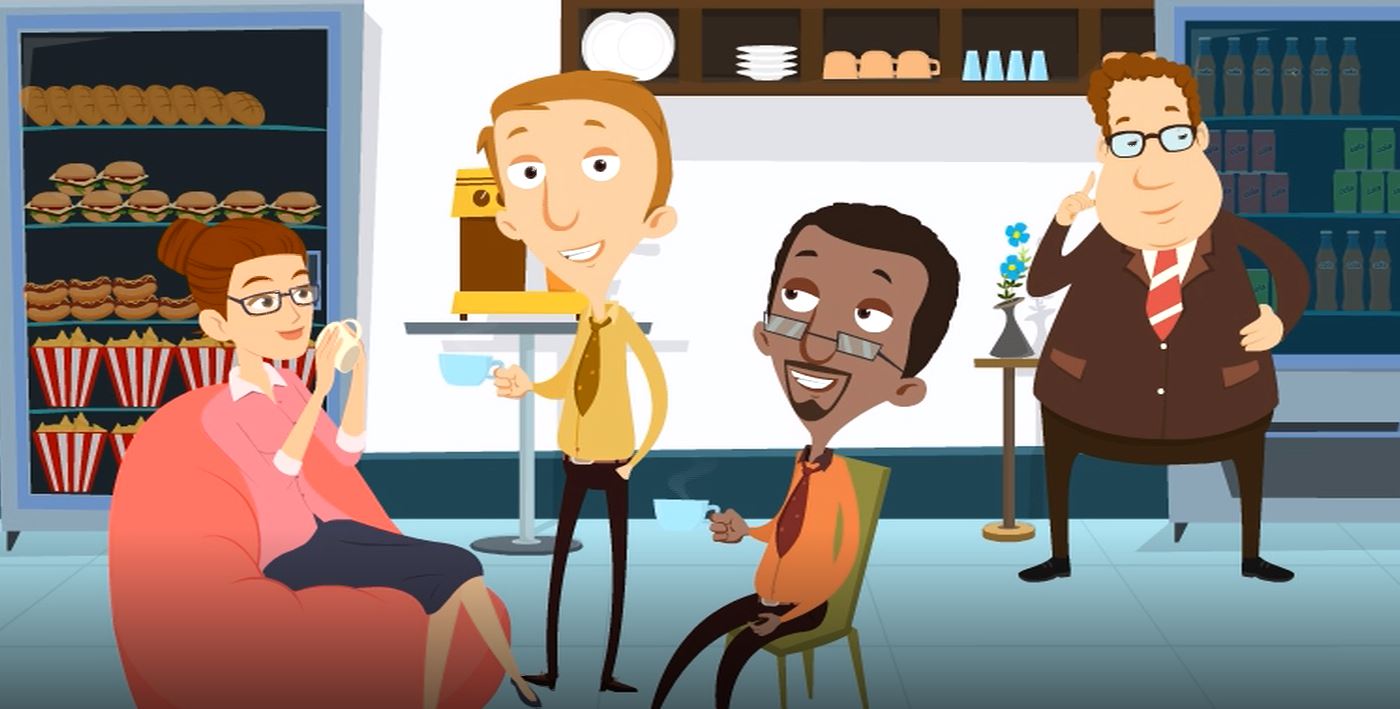
From the video “Focus on Adult SEL” at PBS Learning Media’s resources for California educators (pbslearningmedia.org).
Join CTA’s Mental Health Mondays Sept. 13, Oct. 11 and Nov. 15 to take on self-care and stress management, compassion fatigue and healthy and adaptive coping. For details and to register go to these calendar dates at cta.org/events.
NEA is offering virtual SEL blended learning courses in self-awareness, relationship skills, social awareness, self-management, and responsible decision-making. Register by Sept. 10 for the fall session Sept. 20-Oct. 29 at nea.org/social-emotional-learning-sel-courses.
WestEd’s “SEL for Educators” toolkit for individuals and groups examines five high-leverage practices to support social-emotional development and well-being; selcenter.wested.org/resource/sel-for-educators-toolkit.
CASEL’s curated list of resources focuses on SEL for teachers: casel.org/teacher-resources.
CTA’s Wellness Center
Trauma associated with events of the past year and half runs deep. CTA has created a hub for your well-being and mental health — as an individual and in schools and classrooms. Check out cta.org/wellnesscenter for resources and tips, including links to our Mindful Mondays series.
Featured image: From the video “Focus on Adult SEL” at PBS Learning Media’s resources for California educators (pbslearningmedia.org).
Other stories in this special section on Ways to Wellness:
FOR YOU
- Back on track – expert tips on creating a stronger, healthier you
- Compassion fatigue – setting up a structure and systems to help individuals
FOR YOUR STUDENTS
- Movement matters – PE teachers’ plans to get students into tip-top shape
- Conditions to thrive – School counselors, educators on easing kids back into routine
FOR YOUR SCHOOL COMMUNITY
- Reimagining schools with equity at the center
The Discussion 0 comments Post a Comment